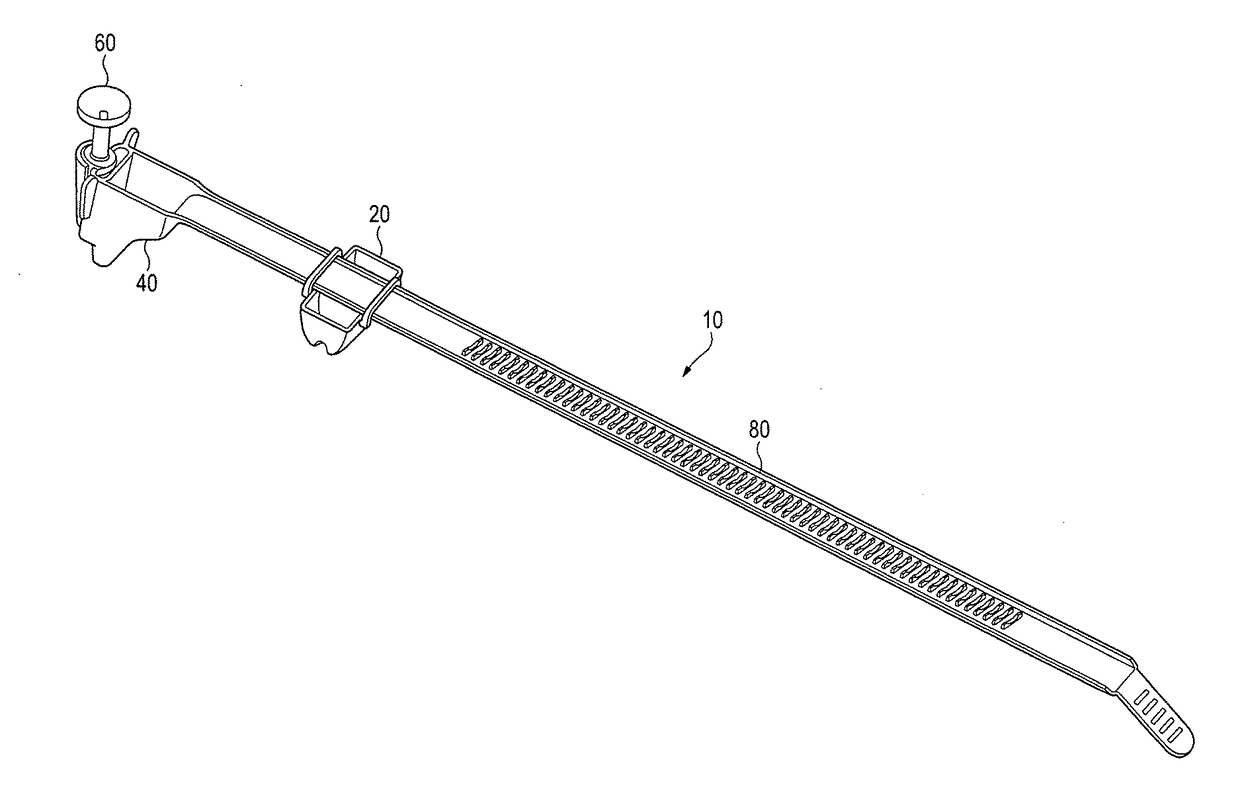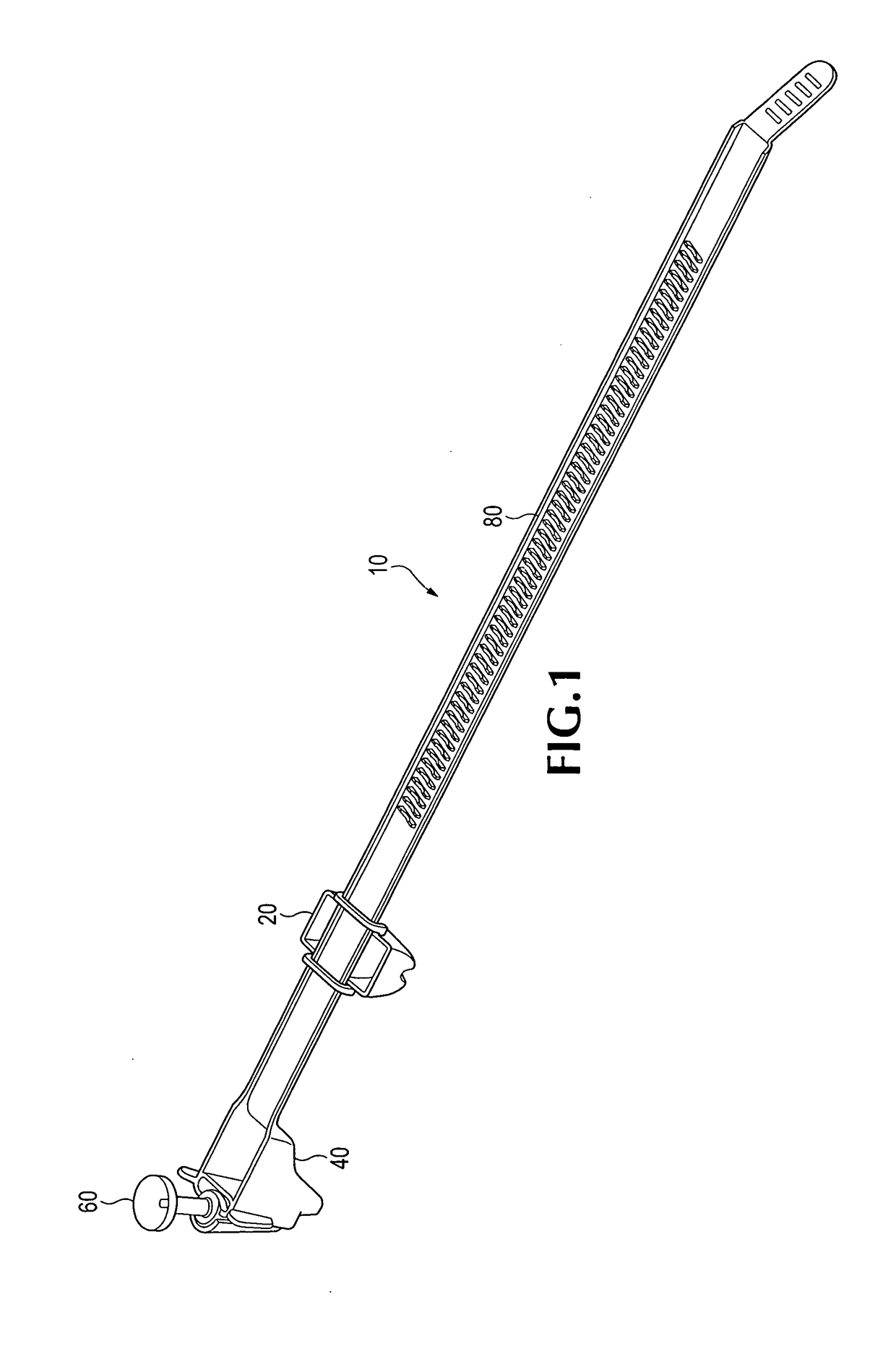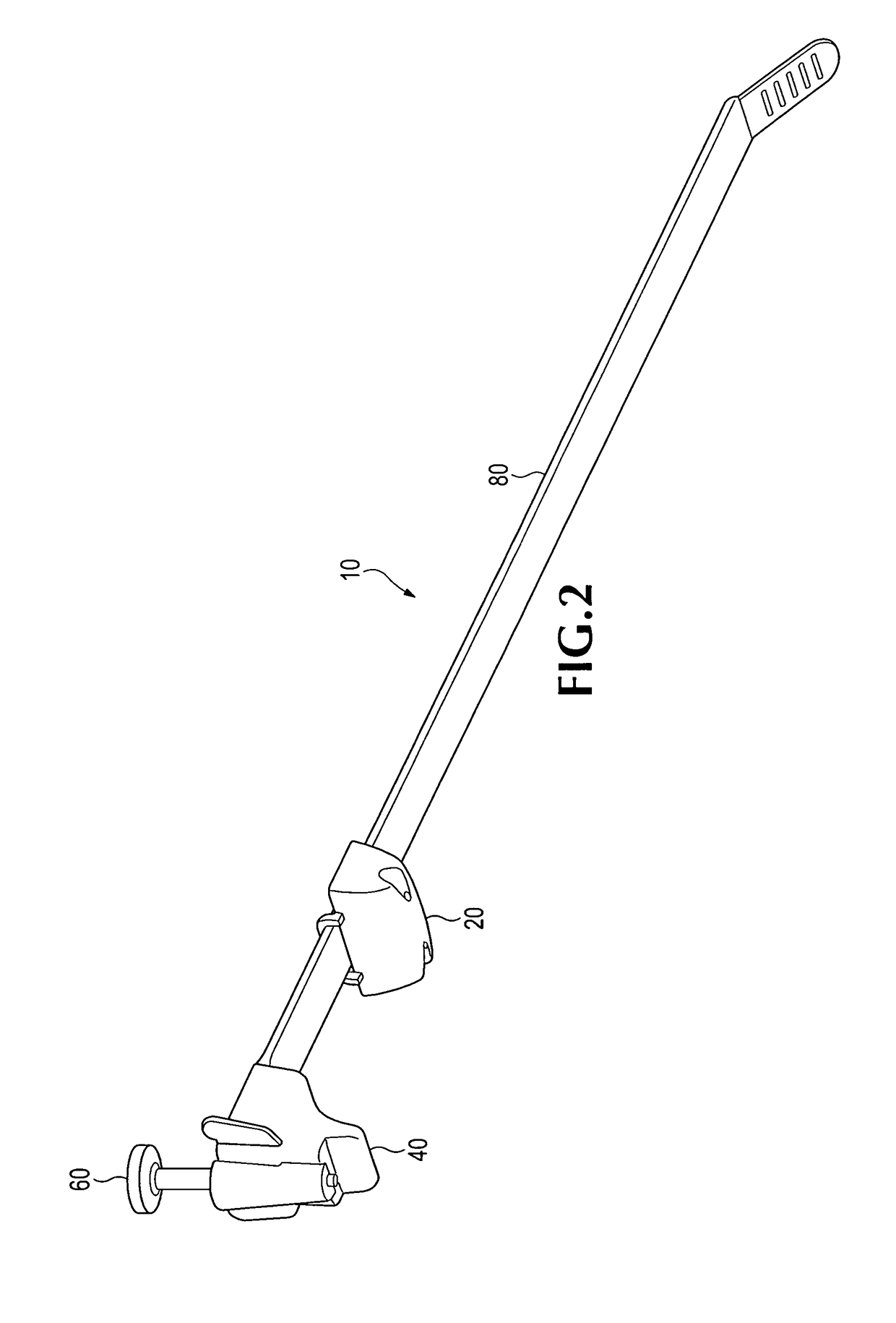Vascular compression apparatus, pad and method of use
a compression apparatus and a technology of a vascular compression device, applied in the field of compression devices, can solve the problems that none of these devices provides a convenient, user-controlled, easily-adjustable means, and achieve the effect of reducing or stopping blood flow, reducing or eliminating blood flow
- Summary
- Abstract
- Description
- Claims
- Application Information
AI Technical Summary
Benefits of technology
Problems solved by technology
Method used
Image
Examples
Embodiment Construction
[0044]An adjustable vascular compression device 10, for use in assisting with post-procedure radial artery hemostasis following catheterization or other cannulation, is shown in the drawings and Detailed Description included herein as a preferred embodiment of the present invention. Although parts are described as discrete components and features are described with specific structures, it will be understood by those skilled in the art that alternative means of construction to achieve the same purpose may be employed without deviating from the present invention.
[0045]As illustrated, FIGS. 1 and 2 show an adjustable vascular compression device 10, which includes a strap 80 to which a threaded element, more particularly a compression pad 20 and an adjustment screw 60 are attached. (Those of skill in the art will appreciate that a bolt or other fixation device, e.g. a bolt 70, may be used as an alternative to an adjustment screw 60, as indicated in FIGS. 12A and 12B. Other suitable alte...
PUM
 Login to View More
Login to View More Abstract
Description
Claims
Application Information
 Login to View More
Login to View More - R&D
- Intellectual Property
- Life Sciences
- Materials
- Tech Scout
- Unparalleled Data Quality
- Higher Quality Content
- 60% Fewer Hallucinations
Browse by: Latest US Patents, China's latest patents, Technical Efficacy Thesaurus, Application Domain, Technology Topic, Popular Technical Reports.
© 2025 PatSnap. All rights reserved.Legal|Privacy policy|Modern Slavery Act Transparency Statement|Sitemap|About US| Contact US: help@patsnap.com



